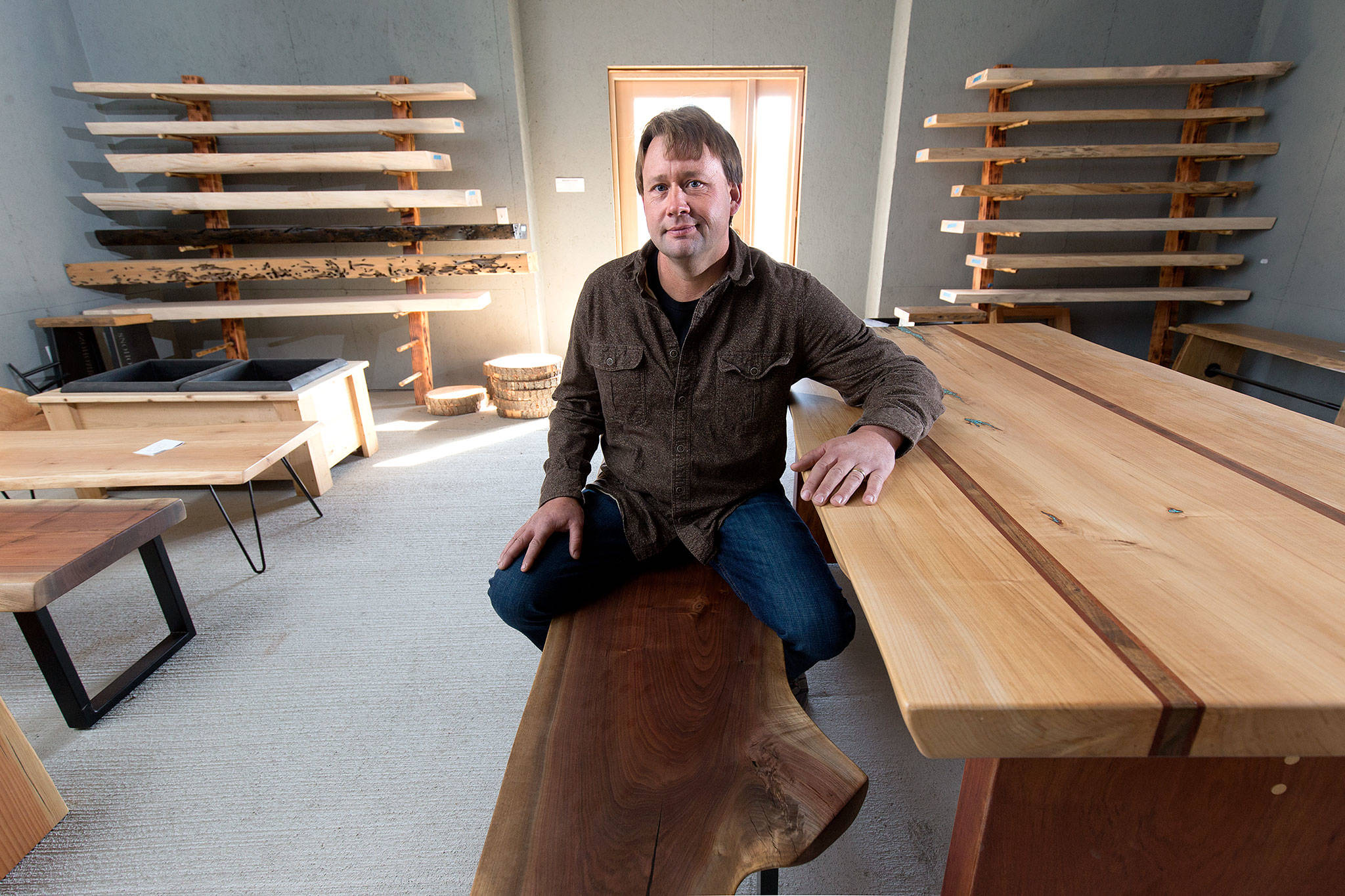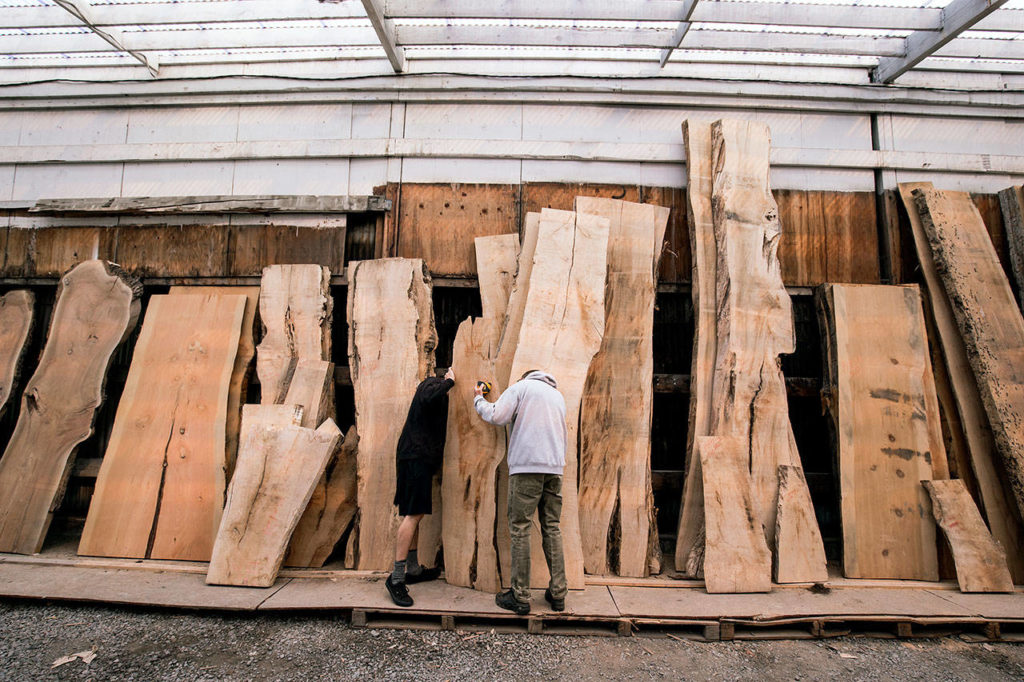EVERETT — “These came from an old-growth rotten log at a Granite Falls clearcut.”
Kevin Stormo is pointing to a towering stack of wood slabs leaning against the side of the storage yard behind his Broadway shop, Stormo Hardwoods. Each is 14 feet tall and almost four feet wide and looks sliced from the side of a tree by a giant whittler.
“We got six slabs out of the tree,” Stormo said. “They were going to grind it up and throw it away.”
He points to another stack of slabs, cut from pier pilings, and another bearing the distinctive blue streaks of forest fire. Inside his showroom, he displays a tabletop made of two slabs cut from a tree that had begun rotting.
“A lot of (the wood) is salvaged,” he said. “I wouldn’t say it’s reclaimed.”
Whatever you call it — imperfect, scrap, low-grade, blemished, split, knotted, rotted — the wood stacked behind Stormo’s small showroom will soon become “live edge” furniture for homes and offices around Puget Sound.
“Live edge” refers to wood furniture, typically tables and shelves, with at least one edge untouched, or natural. The style was popularized by architect George Nakashima in the mid-1940s and has experienced a resurgence in the past decade.
“The overall market and demand for the product continues to grow,” said Blake Paine, who opened Elpis & Wood Furniture, a few blocks north of Stormo on Grand Avenue, in 2013. “People don’t want junk. They want something beautiful, something sustainable.”
Stormo said his clientele has quadrupled since he moved his shop to Everett four months ago after a year in Snohomish.
Most customers come from Seattle and Bellevue, driving up on weekends to choose the slab, tree round or burl round that catches their fancy. Each is then handcrafted into a finished product that can cost as much as $5,000.
Live-edge furniture utilizes wood that is usually discarded, if logged at all, which sellers say contributes to the appeal.
“No two pieces are ever the same. People want something that’s one of a kind,” Stormo said.
Improved epoxies stabilize cracks and fill voids, turning more wood than ever into either furniture or items such as wine racks, plaques and cutting boards.
Matt Moses, who co-founded Elpis & Wood with Paine, even sells live-edge clocks, mirrors and wall art through his Marysville company, Worthy Goods.
“It’s art and function together,” Paine said. “We’re a pretty utilitarian environment, but this isn’t utilitarian. It’s a different ownership experience.”
Cutting and drying live-edge wood is tricky. Cutting can aggravate imperfections and cause logs to split. The wood can also be ruined in the kiln, where each piece dries for several months at temperatures ranging from 95 to 120 degrees.
Stormo said he loses 20 to 30 percent of all the slabs he dries in his Arlington kiln.
“A lot of people who sell wood don’t take the time to dry it properly,” Stormo said. “It can move. It twists and cracks on you.”
Stormo, who comes from a deep-rooted Marysville logging family, said he “fell into” live-edge furniture after working 13 years for UPS and a few more in commercial construction.
When he discovered live-edge online, he bought a log and had a friend with a lumber mill cut it for him. “It was absolutely beautiful,” Stormo said.
Now he has his own mill, as well as a kiln.
Paine spent almost 20 years in high-end audio/visual sales, and started Elpis & Wood with Moses as a nonprofit to provide jobs for underprivileged kids. The nonprofit failed, but the business took off.
Analysts expect interest in live-edge furniture to keep soaring.
While residential live-edge furniture remains the best seller, Stormo said he is getting orders for more and more conference tables, 12 feet by 4 feet. And a growing number of companies are featuring a live-edge look.
Eaglehawk Enterprise in Arlington sells live-edge wood slabs used in The Lodge sports restaurants and Tree House Point, among other local businesses.
“It’s getting more popular,” Stormo said. “This stuff can literally be around 100 years.”
“Look at this,” he says, pointing to a slab. “It’s two or three inches thick. You can sand it down and refinish it. I like to say it’s forever furniture.”
Talk to us
> Give us your news tips.
> Send us a letter to the editor.
> More Herald contact information.


























